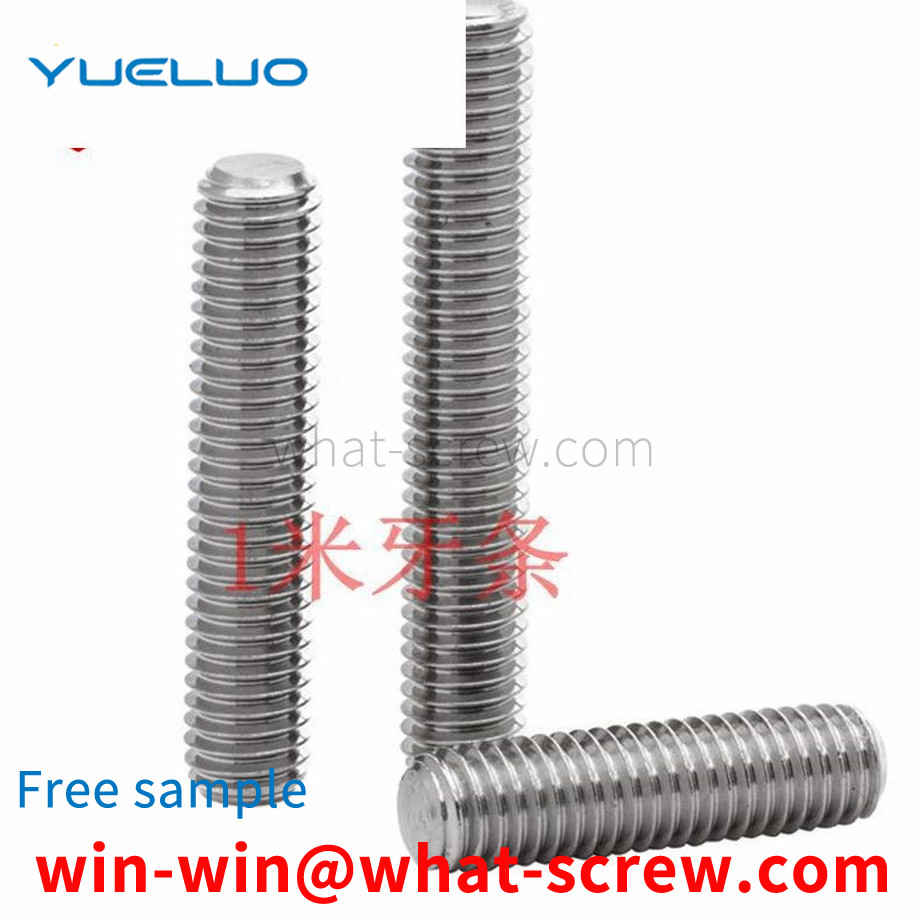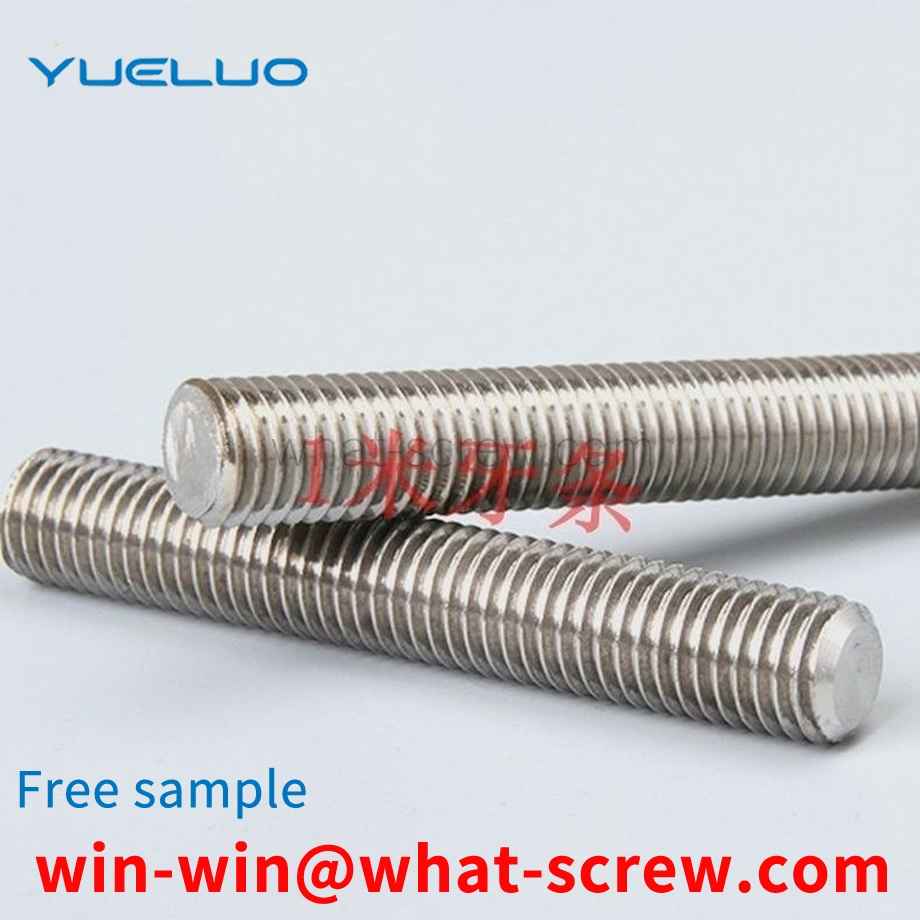The quality of the combination screw should start with the screw wire of the combination screw manufacturer. The wire of the screw is the first hurdle to determine the quality of the combination screw. Even if the wire is not good, even if the production equipment is advanced and the staff is skilled, it is impossible to produce high-quality combination screws. In the second look at the quality of the combination screw products, from the overall aesthetics of the combination screw. A combined screw is formed, the size of the screw head, the superior appearance of the flat washer, whether the screw thread can pass the stop gauge, etc. These are all things that need to be detected. A good combination screw, its overall standard can meet the national standard requirements, or customer requirements. Finally, the quality of the combination screw product is seen from the color of the plating. Of course, the iron combination screw needs to be plated, but the stainless steel combination screw does not need it. Some of them are passivation at most, in order to increase the salt spray resistance of stainless steel combination screws. In the electroplating color of the combination screw, some of them are not well controlled, which will produce a great color difference. That doesn't look good.
Existing wood screws are composed of a threaded portion with a tapered angle and arranged along a tapered stem and a screw head. The head of the screw can be a countersunk head, hemispherical, or other shapes, and the head of the screw has a groove that fits with the tool, a word groove, and a concave cross groove. The taper angle of existing wood screws is either 45 degrees or 60 degrees, and the front end of the taper angle is a pointed point formed by a rotating thread. The existing wood screws have the following three deficiencies in use. Because the taper angle is 45 degrees or 60 degrees, and the thread angle is 71 degrees, the resistance when entering the material is relatively large, so the existing wood screws are manually screwed. It is difficult to screw in, especially when it is used for hardwood materials, and it often happens that the groove of the screw head is screwed out; A large lateral moment will be formed when the screw is screwed, which is prone to the problem of deviation from the position; in addition, because the existing screw is tapered, it will be subjected to both radial force and axial force when entering the material, and its stress state It is more complicated, so it is easy to cause the cracked wood material to burst, and even cause the material to have longitudinal cracks and be unusable.
In recent years, more fasteners have been used in rivet nuts, which have replaced some existing welding methods to a certain extent. Rivet nuts are a way to join some difficult-to-weld equipment and other components. The use of rivet nuts requires rivet nut equipment (manual rivet nut equipment, etc.). Matters needing attention before using manual rivet nut equipment. 1. First, make sure the nozzle screws are properly assembled. According to the size of the rivet nut, select the appropriate equipment and rivet bolt. Every connecting part is not secure. 2. Confirm the deformation length or displacement of the rivet nut, and then leverage the long angle. 3. The scale ring of the rivet nut equipment is used to adjust the rivet stroke, which can be adjusted freely as needed. When adjusting the length of the rivet bolt, open the two handles and adjust the device head sleeve. The rivet bolts are exposed for a length slightly greater than the length of the rivet nut, which will eventually adjust the nut and device sleeve.
People often think that magnets attract stainless steel to verify its pros and cons and its authenticity. If it does not attract non-magnetism, it is considered to be good, and it is genuine; if it is magnetic, it is considered to be counterfeit. In fact, this is an extremely one-sided, unrealistic and wrong identification method. There are many kinds of stainless steel screws, which can be divided into several categories according to the organizational structure at room temperature: 1. Austenite type: such as 304, 321, 316, 310, etc.; 2. Martensite or ferrite type: such as 430, 420, 410, etc.; Austenite type is non-magnetic or weakly magnetic, and martensite or ferrite is magnetic. Most of the stainless steel usually used for decorative tube sheets is austenitic 304 material, which is generally non-magnetic or weakly magnetic, but may also appear magnetic due to fluctuations in chemical composition or different processing conditions caused by smelting, but this cannot be considered as a Counterfeit or substandard, what is the reason for this? As mentioned above, austenite is non-magnetic or weakly magnetic, while martensite or ferrite is magnetic. Due to component segregation or improper heat treatment during smelting, a small amount of martensite or ferrite in austenitic 304 stainless steel will be caused. body tissue. In this way, 304 stainless steel will have weak magnetism. In addition, after cold working of 304 stainless steel, the structure will also be transformed into martensite. The greater the cold working deformation, the more martensite transformation, and the greater the magnetic properties of the steel. Like a batch of steel strips, Φ76 tubes are produced without obvious magnetic induction, and Φ9.5 tubes are produced. The magnetic induction is more obvious due to the large deformation of the bending and bending. The deformation of the square rectangular tube is larger than that of the round tube, especially the corner part, the deformation is more intense and the magnetic force is more obvious. In order to completely eliminate the magnetic properties of 304 steel caused by the above reasons, the stable austenite structure can be restored by high-temperature solution treatment, thereby eliminating the magnetic properties. In particular, the magnetic properties of 304 stainless steel caused by the above reasons are completely different from those of other materials such as 430 and carbon steel, which means that the magnetic properties of 304 steel always show weak magnetic properties. This tells us that if the stainless steel strip is weakly magnetic or completely non-magnetic, it should be judged as 304 or 316 material; if it is the same as carbon steel, it shows strong magnetism, because it is judged as not 304 material.
The nut specification table is to unify all kinds of nuts in detail, and use the table to subdivide some specifications of the nuts. There are many types of nuts, and there are nuts of different materials. Each type of nut has different specifications, and each type of screw also has its mechanical properties and functions. · Square nut grade C GB 39-88 · Hexagonal nut grade C GB /T41-2000 · Hexagonal thick nut GB 56-88 · Wing nut GB 62-88 · Ring nut GB 63-88 · Combined cap nut GB 802 -88 · Spherical Hex Nut GB 804-88 · Fastening Nut GB 805-88 Knurled High Nut GB 806-88 · Knurled Thin Nut GB 807-88 · Small Hexagonal Extra Flat Fine Thread Nut GB 808-88 · Embedded Round nut GB 809-88 · Small round nut GB 810-88 · Round nut GB 812-88 End hole round nut GB 815-88 · Side hole round nut GB 816-88 · Slotted round nut GB 817-88 · Type 1 non-metallic insert hexagonal lock nut GB /T 889.1-2000 · Type 1 non-metallic insert hexagonal lock nut with fine thread GB /T 889.2-2000 · Cap nut GB 923-88 · Type 1 hexagonal nut GB / T 6170-2000 · Type 1 Hexagonal Nuts with Fine Thread GB /T 6171-2000 · Hexagonal Thin Nuts GB /T 6172.1-2000 · Non-metallic Insert Hexagonal Locking Thin Nuts GB /T 6072.2-2000 · Hexagonal Thin Nuts with Fine Pitch GB /T 6173-2000 · Hexagonal thin nuts without chamfer GB /T 6174-2000 · Type 2 hexagon nuts GB /T 6175-2000 · Type 2 hexagon nuts with fine pitch GB /T 6176-2000 · Hexagon flange nuts GB / T 6177.1-2000 · Hexagon flange face nuts with fine pitch GB /T 6177.2-2000 · Type 1 hexagon slotted nut - Grade A and B GB 6178-86 · Type 1 hexagon slotted nut - Grade C GB 6179-86 · 2 Type Hexagonal Slotted Nuts-A and B Grades GB 6180-86 Hexagonal Slotted Thin Nuts-A and B Grades GB 6181-86 Type 2 Non-metallic Insert Hexagonal Lock Nuts GB/T 6182-2000 Non-metallic Inserts Hexagon flange face lock nuts for non-metal inserts GB /T 6183.1-2000 · Non-metallic insert hexagonal flange face lock nuts with fine thread GB /T 6183.2-2000 · Type 1 all-metal hexagonal lock nuts GB /T 6184-2000 · Type 2 all-metal hexagonal lock nut GB /T 6185.1-2000 · Type 2 all-metal hexagonal lock nut fine pitch GB /T 6185.2-2000 · Type 2 all-metal hexagonal lock nut Grade 9 GB /T 6186-2000 · Full Metal Hexagon Flange Face Lock Nuts GB /T 6187.1-2000 · All Metal Six Angle flange face locking nut fine pitch GB /T 6187.2-2000 · Type 1 hexagon slotted nut with fine pitch A and B grades GB 9457-88 · Type 2 hexagonal slotted nut with fine pitch A and B grade GB 9458-88 · Hexagonal Slotted Thin Nut Fine Thread Grade A and B GB 9459-88 · Welded Square Nut GB /T 13680-92 · Welded Hexagonal Nut GB /T 13681-92 · Flat Head Rivet Nut GB /T 17880.1-1999 · Countersunk Head Rivet Nut GB /T 17880.2-1999 · Small countersunk head rivet nuts GB /T 17880.3-1999 · 120° small countersunk head rivet nuts GB /T 17880.4-1999 · Flat head hexagonal rivet nuts GB /T 17880.5-1999 · Hexagonal nuts for precision machinery GB /T 18195-2000
We have many years of experience in the production and sales of screws, nuts, flat washers, etc. The main products are: copper stud nuts, GR2TA2 screws, German standard DIN125 gaskets, implosion and implosion screws and other products, we can provide you with suitable screws for you. Firmware Solutions.



















 Service Hotline
Service Hotline




